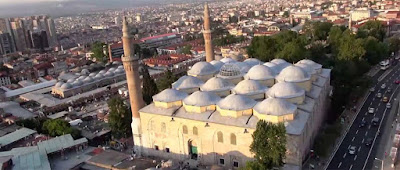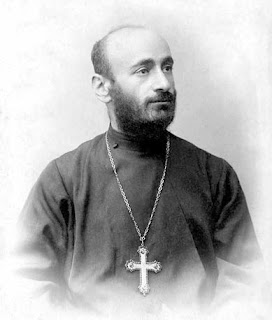A Unique Monument to Faith, Ulu Camii (Grand Mosque), Bursa
Ulu Camii was built during the reign of Sultan Bayezid I between 1396-1399. Being one of the early period mosques of the Ottoman State, the architecture still has that trace of Persian aesthetic probably. The top of the minarets are embellished with curvy elements that gives a soft touch on our sight. And the twenty small domes that cover a large area gives a more democratic feeling than the single centered domes of Istanbul which were adopted from the Byzantines which impose the power of the empire in a stately way. The mosques in Bursa generally have more of that detailed aesthetic than the monumental Imperial Mosques in Istanbul. Maybe there were lots of things to consider when your power wasn't that absolute.
A second thought inspired by a fellow commentator is that there is a trade-off between grandeur and human element in architecture. Bursa is more "humanistic" when compared to Istanbul, Istanbul when compared to Moscow, Florence when compared to Rome. Perhaps when extractive institutions dominate in a society the architecture tends to be on the grandeur side of the spectrum, rather.
If you look closely at the photo you'll notice that actually there is not a dome in the center but an opening letting the visitor feel the outer elements while under cover. Right under the dome there's a fountain (şadırvan) combining the element of water with that of air. Both of these techniques are descendants of Seljuk origin, the predecessor sultanate to Anatolian Lordships (Beylik) based in Konya (Iconium).
The mosque survived Tamerlane who invaded Bursa after gaining victory in the Battle of Ankara before distributing the lands of Ottomans in Anatolia back to their lords. When clouds gather over the Anatolia after Tamerlane's departure, the city was put under siege by a feudal lord from Karaman, Karamanoğlu Mehmed.
Ulu Camii still stands as a unique monument to faith.
 |
| Ulu Camii, Bursa Photo Credit: www.bursaulucamii.com |
If you look closely at the photo you'll notice that actually there is not a dome in the center but an opening letting the visitor feel the outer elements while under cover. Right under the dome there's a fountain (şadırvan) combining the element of water with that of air. Both of these techniques are descendants of Seljuk origin, the predecessor sultanate to Anatolian Lordships (Beylik) based in Konya (Iconium).
The mosque survived Tamerlane who invaded Bursa after gaining victory in the Battle of Ankara before distributing the lands of Ottomans in Anatolia back to their lords. When clouds gather over the Anatolia after Tamerlane's departure, the city was put under siege by a feudal lord from Karaman, Karamanoğlu Mehmed.
Ulu Camii still stands as a unique monument to faith.


Grandeur is definitely impressive but there is a price to pay: the distance it creates with the human element. Actually I believe Ottomans knew this well. Even In Istanbul the human element is still there when compared to some capitals where the state was as mighty.
ReplyDeleteAs you say there is a trade off between the stately grandeur and the human element.That's very true, i can say Bursa is more "humanistic" than Istanbul, but likewise it feels more "lay" when compared to Moscow.
ReplyDelete